Britain is renowned worldwide for its lush, historic gardens—palaces, parks, and botanical marvels that attract millions. But for those craving something a little different, away from the crowds of famous sites like Kew Gardens, there’s a treasure trove of lesser-known gardens waiting to be discovered. These hidden gems hold secrets of ancient horticulture, botanical innovation, and scenic tranquility, often tucked away in unexpected rural corners or tucked behind unassuming village gateways.
In this article, we’ll take you on a journey through six lesser-known public gardens across Britain. Each of these special places offers a unique botanical experience—rich in history, design, and natural beauty—perfect for garden lovers, history buffs, or anyone seeking a peaceful escape in nature. Whether you’re dreaming of peaceful woodland walks, exotic plant collections, or historic garden design, these lesser-known gardens are well worth your time.
Hidden away in the lush Cornish countryside, the Lost Gardens of Heligan are a storybook landscape with a history as romantic as its scenery. Once a grand Victorian estate garden, Heligan was beautifully cultivated and full of exotic plants, vegetable plots, and secret pathways—until it was abandoned during the upheavals of the 20th century. For decades, it lay in silent ruins—overgrown with ivy, wisteria, and wild greenery—until a passionate revival transformed it into one of Britain’s most enchanting and surprisingly resilient hidden gardens.
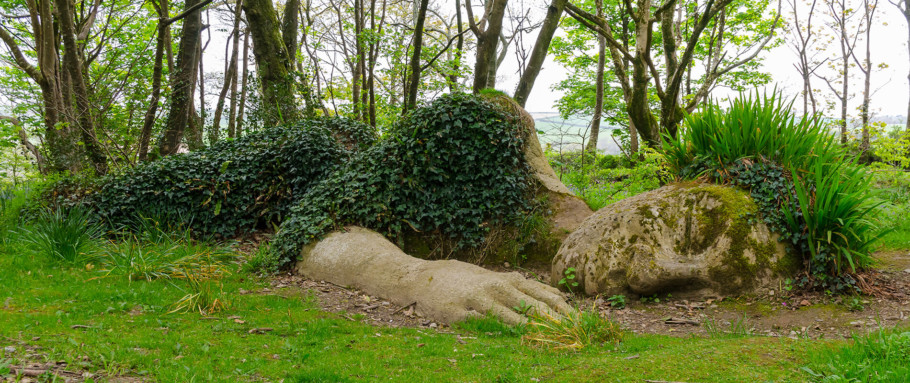
The gardens of Heligan were originally developed in the 19th century by the Tremayne family, who sought to create an exotic, lush landscape that showcased horticultural ingenuity and a love of the natural world. The estate boasted formal Italianate terraces, subtropical plantings, and an array of rare and imported species brought from across the British Empire—the kind of visionary planting that made Heligan a marvel of Victorian Britain.
In addition to its botanical collections, Heligan was famous for its vegetable gardens, which supplied fresh produce to the local estate and even became a famous source of food during wartime. There were secret pathways, old stone follies, and lath houses filled with tropical plants—a quiet paradise of innovation and beauty.
However, the upheavals of the 20th century—world wars, economic decline, and changes in estate ownership—began to take their toll. During the First and Second World Wars, the estate was vacated, and the gardens were left to decay. Over the following decades, nature reclaimed Heligan, and the gardens vanished beneath thick woodland and tangled vines.
In the 1990s, a dedicated team of gardeners, historians, and volunteers rediscovered the long-forgotten estate, finding overgrown ruins, abandoned pathways, and remnants of the once-glorious plantings. Through painstaking effort, the lost gardens were gradually restored, employing historical research, botanical expertise, and a deep love for Cornwall’s rural heritage.
Today, the Heligan estate is a bustling, atmospheric garden that blends Victorian botanical excess with natural wilderness. Visitors can wander through the restored formal gardens—such as the Italianate terraces and subtropical greenhouses—or explore the jungle-like wild gardens, where ancient trees, massive sculptures, and winding streams create a mysterious, primeval atmosphere.
Heligan’s gardens aren’t just a horticultural triumph; they’re stories cast in stone and seed. Legend has it that the estate was once haunted by a mysterious ‘Grey Lady,’ believed to be the ghost of a former gardener who still tends to the secret corners of the gardens. You might even spot her as one of the sculptures in the garden’s woodland area! As a living testament to resilience, Heligan also hosts a thriving kitchen garden that produces organic produce and rare heirloom varieties, continuing the estate’s historic role as a provider of fresh, local food.
There are hidden corners too—the hazel maze, the secret meadow, and the cattle farm where rare breeds roam. As you walk beneath the towering trees and ancient oaks, you’ll feel the spirit of Victorian innovation, the resilience of nature, and a timeless dedication to beauty and sustainability.
Tucked away in a quiet corner of Kent’s historic landscape, the Japanese Garden at Cowden is a place of serene beauty—an unexpected oasis that transports visitors from the rolling English countryside into a tranquil, meditative world inspired by traditional Japanese landscape design. While its peaceful pathways and koi-filled ponds are popular among garden enthusiasts, many tourists overlook this hidden gem, making it a perfect retreat for those seeking solitude, reflection, and cultural discovery.
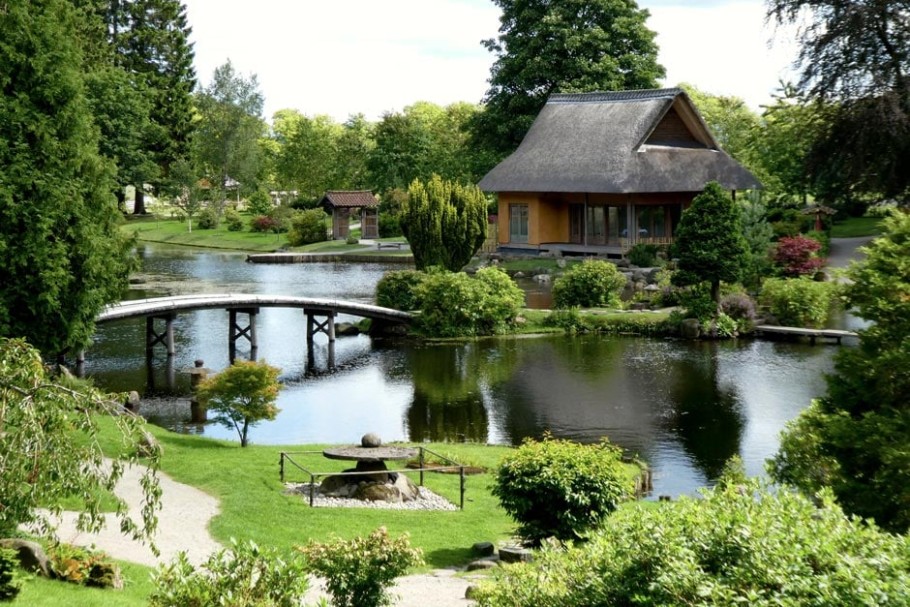
The story of Cowden’s Japanese Garden begins in the late 20th century, when the estate’s owners, inspired by their admiration for Japanese art and culture, decided to create an authentic landscape within their grounds to pay homage to this ancient tradition. Construction began in the 1970s, and the project was overseen by landscape architects who embraced the principles of Zen, minimalism, and harmony with nature. The garden was designed to embody the aesthetic ideals of balance, simplicity, and tranquility—values central to Japanese landscape art.
The garden’s layout is based on classic elements: a large reflective pond, delicate Japanese maples, arched wooden bridges, stone lanterns, and winding pathways that encourage slow, contemplative walks. The carefully arranged rocks and plants are deliberately chosen to resemble natural landscapes, inviting visitors into a space of spiritual calm and aesthetic balance perfect for mindfulness or quiet enjoyment.
Walking into the garden feels like entering another world—one where time slows down and every sound is softened by still water and rustling leaves. The koi pond is the centerpiece, with graceful fish gliding beneath overhanging willows, creating ripples that mirror the mood of the sky above. Stone pathways lead to quiet niches where visitors can sit and observe the natural beauty, or simply breathe in the scent of moss and flowering irises.
A traditional Japanese tea house, built with authentic materials, offers a space for quiet reflection and ritual tea ceremonies. This element underscores the garden’s purpose as a place for spiritual renewal, connecting visitors with centuries-old traditions rooted in Japanese culture.
Although small in size compared to other royal or botanical gardens, Cowden’s Japanese Garden is a masterpiece of cultural authenticity. Its non-intrusive design emphasizes harmony between nature and man, with every stone, tree, and path thoughtfully placed. To many visitors, it’s a rare glimpse into a philosophy that values simplicity, natural beauty, and peace—a stark contrast to the often formal or elaborate English garden design.
Because it’s somewhat off the beaten path, and not as heavily promoted as other gardens, Cowden remains a peaceful destination, especially during the early mornings or on quieter weekdays. The garden’s quiet serenity makes it ideal for mindfulness walks, artistic inspiration, or simply escaping the hustle and bustle of modern life.
Nestled within the historic grounds of Dyrham Park in Gloucestershire lies a garden with a compelling story and spectacular scenery, often overlooked by visitors chasing grander estates. The West Garden at Dyrham is a remarkable example of 17th-century horticultural craftsmanship—once a vital part of one of Britain’s most magnificent country estates, now a tranquil haven of beauty and history.
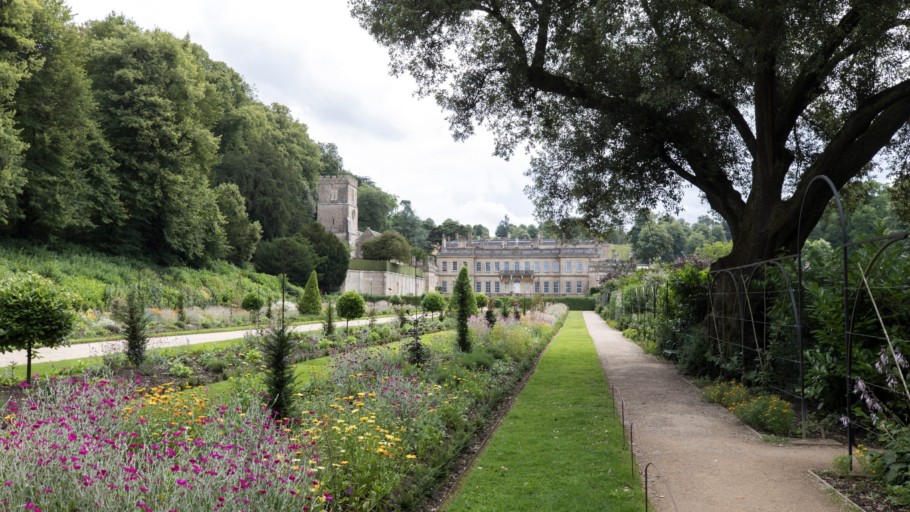
Originally constructed in the early 1600s to serve as the estate’s source of fresh produce, the West Garden was a hub of activity and craftsmanship. Its high stone walls, built from local stone, provided shelter from the wind and created microclimates perfect for growing herbs, vegetables, fruits, and exotic plants.
Throughout the centuries, the garden evolved—adding ornate flower beds, fruit cages, greenhouses, and intricate planting schemes. Its design reflects the priorities of its era: functional efficiency mixed with aesthetic elegance. It was regarded as a symbol of the estate’s wealth and a testament to the skill of the garden’s gardeners—who managed the plants, the architecture, and even exotic imports like citrus and fig trees.
Today, the Dyrham Park West Garden is a testament to traditional horticultural techniques. Restored in recent decades, it is now a working garden producing organic fruits, vegetables, and herbs, with a focus on heritage breeds and heirloom varieties. Walking through its stone archways and lush borders, you’ll see the skill that went into managing such a productive, beautiful space.
Intriguingly, the garden also retains remnants of Victorian glasshouses, where plants from the expanding British Empire were nurtured—an echo of a colonial past and a testament to botanical experimentation. The garden’s layout reflects centuries of horticultural craftsmanship, blending utilitarian functionality with aesthetic pleasure.
Many legends surround these ancient walls. Local stories tell of secret tunnels leading out into the surrounding woodland—once used by estate workers or even smuggling parties during turbulent times. Others speak of a rare breed of waterfowl kept in the estate’s ponds, which still thrive amidst the lush surroundings.
While today’s visitors enjoy the peaceful beauty of the gardens, they also witness a living story—an enduring tribute to sustainability, craftsmanship, and the dedication of generations of gardeners. The sense of stepping into a time capsule—where history, horticulture, and local legend collide—is what makes Dyrham’s West Garden truly special.
Tucked into the gentle Wiltshire countryside, the stunning landscapes of Stourhead are a well-kept secret among garden lovers. While often overshadowed by better-known destinations, Stourhead’s enchanting vistas, classical temples, and ancient trees offer an experience of timeless serenity and awe. With its layers of history, myth, and artistry, this garden remains a magical escape for those willing to seek it out.
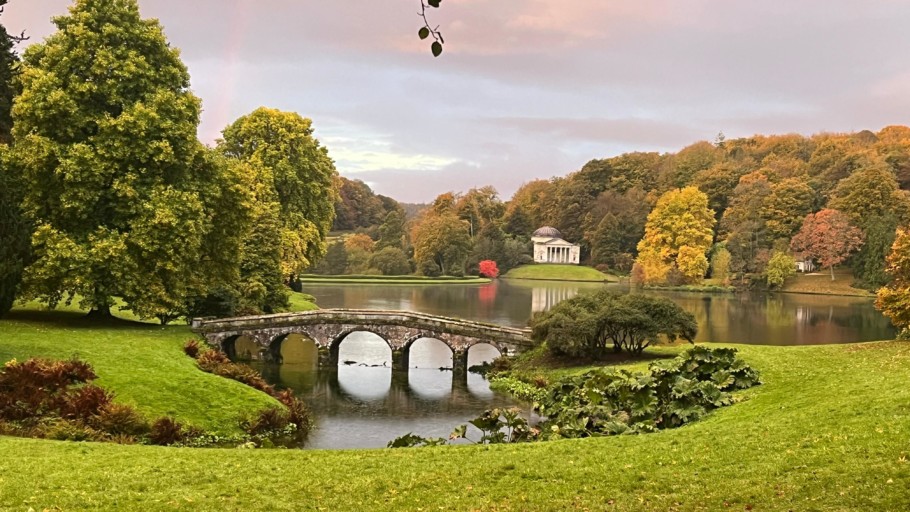
The origins of Stourhead date back to the early 18th century, when the influential banker and collector Sir Henry Hoare set out to create a landscape that was both a botanical paradise and a living work of art. Inspired by classical mythology, the grand design aimed to evoke the beauty of an idealized ancient world, blending natural scenery with architectural elements like temples, bridges, and statues.
Construction began around 1744, with architect and garden designer Henry Flitcroft playing a key role in shaping the landscape. Together, they created a series of winding paths and lakes, strategically placed classical follies, and picturesque buildings—most notably the Pantheon-inspired Temple of Apollo—their aim to craft a landscape that told stories and engaged the senses.
Today, the garden is celebrated as one of the finest examples of English landscape gardening. Its design embodies the “picturesque” style—an aesthetic gloriously romantic, with misty lakes, sweeping meadows, and architectural vignettes that seem almost surreal.
Walking through the grounds feels like traversing through a living myth. The lake mirrors the sky, with distant trees and follies reflected on its surface—each view carefully composed for dramatic effect. Visitors often imagine themselves in a scene from a classical myth, or watching a Shakespearean play unfold amid the ancient trees and stone columns.
One of the most captivating features is the grove of ancient-native oak, which is said to be over 300 years old. Its twisted branches seem to whisper stories of the centuries it has witnessed—wars, royal visits, and the evolution of English taste.
As you stroll around, you come across a variety of “storytelling” spots—quiet corners where mythological statues, a rustic bridge, or an ancient-style ruin evoke the spirit of ancient Greece or Rome. These elements were designed to stimulate the imagination and connect visitors with the classical ideals of harmony, beauty, and storytelling—elements that make Stourhead a truly timeless experience.
While the overall landscape remains rooted in 18th-century design, its beauty is ever-changing. Spring brings carpets of bluebells, wild garlic, and fresh blossoms; summer turns the lakes into a shimmering oasis; autumn transforms the estate into a riot of fiery reds and oranges; and winter offers stark, tranquil vistas, with ice on the lake and leafless trees framing frosted statuary and temples.
This constant transformation makes Stourhead a favorite for photographers and nature enthusiasts alike. The garden’s evocative scenery, combined with its rich history and mythic atmosphere, offers visitors both a peaceful retreat and a feast for the senses.
Nestled in the rolling landscape of Kent, Sissinghurst Castle Garden is renowned worldwide for its breathtaking beauty, romanticized design, and the storied life of its creator, Vita Sackville-West. While it is a favorite among garden lovers, this enchanting haven remains a lesser-trodden gem compared to other historic gardens, offering an intimate glimpse into personal passion, literary inspiration, and horticultural innovation.
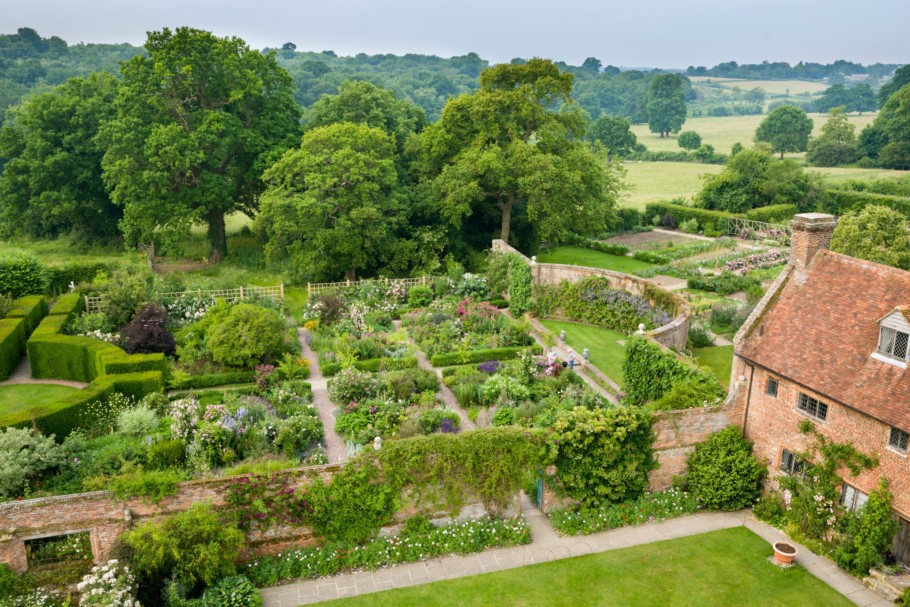
The origins of Sissinghurst date back to the 16th century when a Tudor castle stood on the site. But it was in the 1930s that the garden’s true story began—when Vita Sackville-West, the celebrated poet and writer, and her husband, Harold Nicolson, transformed the site into a garden of poetic and artistic vision. Their shared passion for plants, color, and storytelling shaped the landscape into an immersive, labyrinthine masterpiece.
Vita’s signature feature was the creation of “garden rooms”—small, enclosed spaces each with a distinct theme, color palette, and mood. Perhaps the most famous of these is the White Garden, a stunning collection of silver and pale plants that evoke purity and serenity, reminiscent of her poetic sensibilities. Each room was carefully designed to tell a story, engendering intimacy and wonder for visitors wandering through.
The garden at Sissinghurst isn’t just a botanical delight; it’s a sanctuary of creativity and inspiration. Vita Sackville-West drew poetry and prose from her surroundings, and the garden itself became a muse—helping to redefine English garden design with its playful, intimate style.
The romantic ruins of the old castle, overgrown and mysterious, add a historic depth to the setting. When the estate was purchased by the National Trust, efforts were made to preserve Vita and Harold’s vision. Today, visitors can walk through lush borders, hidden nooks, and secret courtyards, discovering stories of literary passion, love, and the enduring power of plants to inspire art.
Tucked away in the picturesque Cheshire countryside, Arley Hall & Gardens is an elegant estate with a fascinating history and a beautifully preserved Victorian and Regency landscape. Arley Hall’s romantic architecture and historic gardens provide an understated yet stunning escape for garden enthusiasts and history lovers alike that remains firmly off the beaten track.
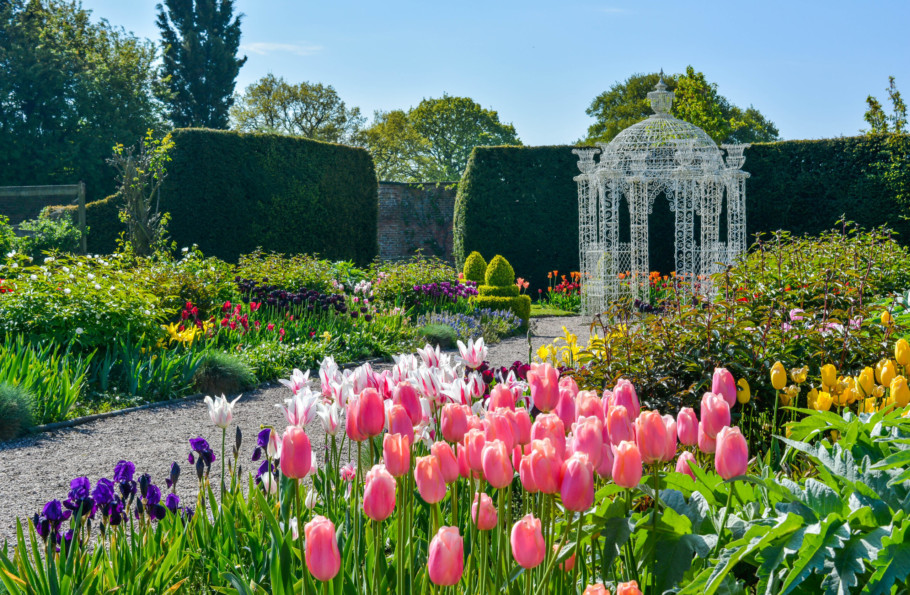
Originally a timber-framed manor dating back to the 12th century, the estate was transformed in the early 19th century into a stately mansion in the Regency style, with elegant facade features and grand interiors. Landowners, including the Egerton family for generations, cultivated the estate’s gardens to reflect emerging trends of the time—blending formal layouts with naturalistic planting.
Over the centuries, Arley’s gardens have witnessed countless events—royal visits, aristocratic parties, and local traditions. The estate’s history has been lovingly preserved, and the gardens continue to reflect the grandeur of the Regency era with romantic terraces, clipped yew hedges, and sprawling lawns.
Today, visitors are greeted by a series of beautifully curated gardens, including the Italianate terraces, Wildflower Gardens, and a formal kitchen garden full of organic vegetables and herbs. The estate’s floral borders burst with color in spring and summer, while its historic arboretum features exotic trees that create a wonderful backdrop for centuries of landscape design.
The garden’s hidden corners—meandering pathways, enchanted woodland areas, and peaceful lakes—invite visitors to explore at leisure. Its cozy walled garden and rose garden are perfect for picnics and quiet reflection, making it a true retreat from busy city life.
While the grand estates and famous botanical gardens attract their fair share of visitors, the true soul of Britain’s garden heritage often lies in its lesser-known gems—hidden, peaceful, and rich with stories. From the romantic ruins of Heligan to the meditative tranquility of Cowden’s Japanese Garden, and the artistic richness of Sissinghurst, these lesser-known gardens reveal a quieter, more intimate side of Britain’s horticultural history.
Each garden holds a story—of invention, passion, legend, or personal pursuit—and invites us to slow down, reflect, and connect with the land’s beauty and history. So whether you seek peaceful contemplation, poetic inspiration, or a quiet adventure, these secret gardens are waiting to be explored. Venture off the beaten path, and discover Britain’s botanical treasures: timeless, enchanting, and truly special.
18 September 2025